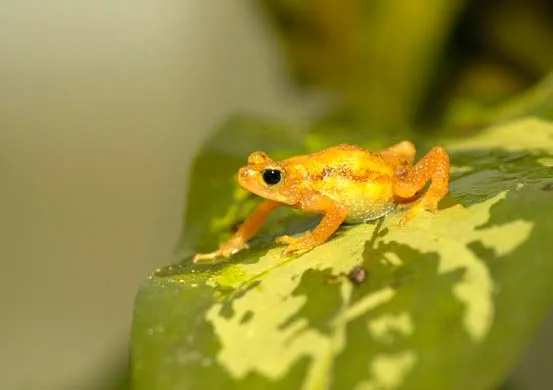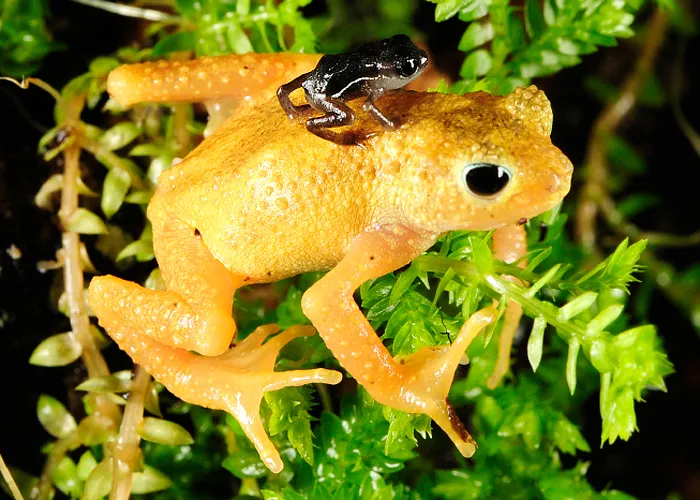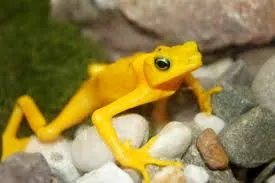The Kihansi spray toad, scientifically Nectophrynoides asperginis, is a small toad native to Tanzania.The species is live-bearing and insectivorous. The Kihansi spray toad is recently categorized as "Extinct in the wild" by the International Union for Conservation of Nature(IUCN), though the species insists in ex situ, captive breeding populations.

The Kihansi spray toad is a small, sexually dimorphic anuran, with *females reaching up to 2.9 cm (1.1 in) long and males up to 1.9 cm (0.75 in). The toads generally have a yellow skin coloration with brownish dorsolateral striping. Females are often dimmed in coloration, and males normally have more essential markings. Moreover, males exhibit dark inguinal patches on their sides where their hind legs meet their abdomens. Abdominal skin is diaphanous, and developing offspring can often be seen in the bellies of gravid females.

These toads have webbed toes on their legs, but lack expanded toe tips. They have scarcity of external ears, but do possess normal anuran inner ear features, with the exception of tympanic membranes and air-filled middle ear cavities.
Before of its extirpation, the Kihansi spray toad was native only to a two hectare area at the base of the Kihansi River waterfall in the Udzungwa escarpment of the Eastern Arc Mountains in Tanzania.

The extinction in the wild of the Kihansi spray toad was mainly because of habitat loss following the construction of Kihansi Dam in 1999, which lessened the amount of water coming down from the waterfall into the gorge by 90 percent. This led to the spray toad's microhabitat being compromised, as it lessened the amount of water spray, which the toads were reliant on. A sprinkler system that mimicked the natural water spray was not yet operational when the Kihansi Dam opened. In 2003 there was a final population crash in the species. This forgathered with a breakdown of the sprinkler system during the dry season, the appearance of the disease chytridiomycosis, and the brief opening of the Kihansi Dam to flush out sediments, which contained pesticides. The last verified record of wild Kihansi spray toads was in 2004.
Photo credit Google